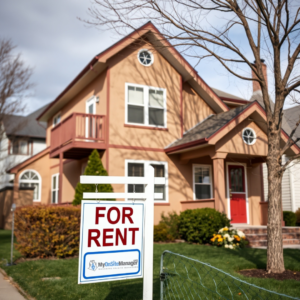Miami is known for its white-sand beaches, energetic nightlife, and a melting pot of cultures—but for many residents, living in the Magic City is becoming financially unsustainable. A new report by Redfin reveals a sobering truth: Miami now ranks as the second-most unaffordable city for renters in the U.S., only behind Providence, Rhode Island.
Despite slight drops in rental costs nationwide, Miami renters are still feeling the squeeze—and it’s not letting up anytime soon.
The Numbers Behind the Struggle
Let’s break down the math:
-
The median rent in Miami is currently $2,373.
-
To comfortably afford that (spending no more than 30% of income on housing), a household would need to earn about $94,920 per year.
-
But Miami’s median income? Only $57,157.
That’s a $37,000 gap—a glaring mismatch between earnings and housing costs.
For the average Miamian, this means more than half their income could be going toward rent, leaving little left for essentials like food, transportation, healthcare, or savings. It’s a reality that many are grappling with every month.
Miami vs. Other Cities
This isn’t just a Miami problem—but the city’s affordability gap is particularly alarming. Other major cities with high rent burdens include:
-
Los Angeles, where rent is also high but wages tend to be more in line with living costs.
-
New York City, where rent remains steep but public housing, rent control, and public transit help offset costs.
-
Boston, which faces similar affordability issues but also offers higher average incomes in tech and finance sectors.
What makes Miami stand out is that even with the recent $200 dip in rental prices, the wages simply aren’t keeping up.
Are There Signs of Relief Ahead?
There’s a bit of good news—though it comes with a disclaimer.
Marta Carvajalino, a Miami-based real estate agent with the Keyes Company, has noticed an increase in apartment construction, which is leading to more flexible leasing terms for renters. Developers, facing high vacancy rates, are now more willing to offer incentives like:
-
One or two months of free rent
-
Reduced security deposits
-
Waived application fees
Economists like Redfin’s Sheharyar Bokhari are cautiously optimistic, suggesting that rent stabilization could continue as more units become available and wage growth picks up.
But this relief is gradual. For many renters, it’s not coming fast enough.
The Bigger Picture: Why This Matters
Unaffordable housing isn’t just a personal finance issue—it’s a community crisis. When residents are priced out of their neighborhoods:
-
Families face frequent moves, disrupting education and stability.
-
Workers are forced to commute longer distances, straining public infrastructure.
-
Local businesses struggle to find employees who can afford to live nearby.
-
The cultural fabric of the city begins to unravel, as long-time residents are replaced by short-term renters or out-of-town investors.
Miami’s housing market could see a tipping point if these trends continue unchecked.
What Needs to Change?
Solving Miami’s rent crisis requires a multi-pronged approach:
-
Incentivize Affordable Housing
Local governments must encourage developers to include affordable units in new projects, perhaps through tax breaks or zoning advantages. -
Strengthen Rent Assistance Programs
Expanding eligibility and access to housing vouchers and subsidies can bridge the affordability gap for low- and middle-income families. -
Focus on Wages
Policies that support wage growth—especially in tourism, hospitality, and service sectors—are essential for helping residents catch up to housing costs. -
Community Investment
Support for first-time homebuyer programs, co-ops, and community land trusts can help stabilize neighborhoods long-term.
Final Thoughts
Miami’s rental market reflects a larger affordability crisis impacting cities across the U.S.—but the contrast here is especially sharp. With sunshine and style comes a cost, and right now, that cost is pushing residents to the brink.
As the city grows, so must its commitment to sustainable, inclusive housing solutions. Because everyone deserves not just to live in Miami—but to thrive here.
Source: Miami Ranks Second in U.S. For Rent Unaffordability Despite National Rent Decreases – Hoodline

